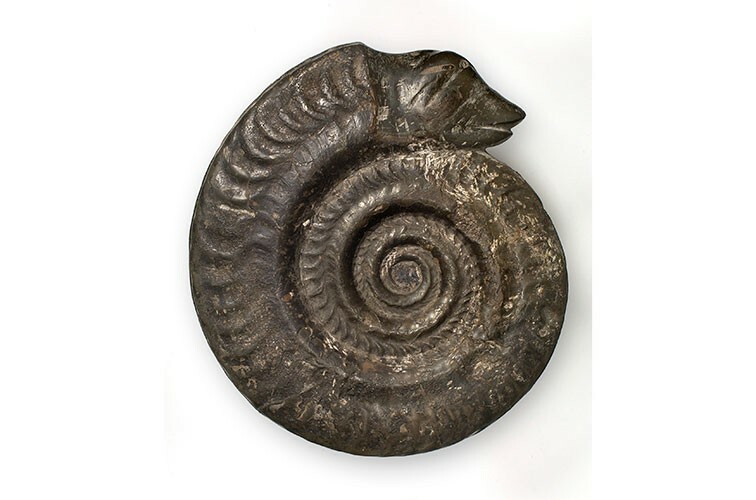
Ammonites
Key Words:
Earth’s History · Cycles of Life · Grounding · Ancient Wisdom · Transformation · Natural Beauty · Connection to the Ocean
Earth’s History · Cycles of Life · Grounding · Ancient Wisdom · Transformation · Natural Beauty · Connection to the Ocean
Ammonites were shelled sea creatures—part of the cephalopod family—that lived millions of years ago in Earth’s ancient oceans. Their coiled shells are now preserved as fossils, offering a glimpse into a world long past.
These creatures first appeared about 400 million years ago and became extinct around 66 million years ago, at the same time as the dinosaurs. Today, their spiraled fossilized shells are found across the globe and are treasured for both their natural beauty and their connection to the cycles of life and time.
In earlier centuries, before their origin was understood, ammonites were called “snakestones”, with legends claiming they were coiled snakes turned to stone. In truth, they were ocean-dwelling mollusks—more closely related to squids, octopuses, and cuttlefish than to snakes or reptiles.

An ammonite fossil with a carved snake's head SC: Natural History Museum
An ammonite’s shell grew with the creature. As the animal outgrew one chamber, it would build a new one and seal off the previous space. The walls separating these chambers, called septa, give many ammonite fossils their signature ribbed appearance. This gradual process of building and moving through the shell became a lasting record of the ammonite’s life journey—one that is now beautifully preserved in stone.
Ammonite shells often form in a flat spiral, though some species evolved more unusual shapes. A small number straightened out as they matured or developed twisted, knotted forms—each variety a unique expression of nature’s creativity.

The Ammonites at 12 Stones and Lavender are sourced from the Mahajanga River Basin near Ambatolafia, in northwest Madagascar. These fossils date back to the Early Cretaceous period, approximately 100 to 113 million years ago. They are typically preserved in shades of yellow, brown, black, or white calcite, giving each piece its own distinctive color and character.
Holding or displaying an ammonite offers a connection to the deep history of our planet—a tangible reminder of life’s continual cycles of change and transformation. Many people use ammonites as grounding tools or symbols of resilience, appreciating how these ancient shells reflect both the beauty and impermanence of life.
Some believe that ammonites also carry an energetic frequency linked to Earth’s wisdom and natural rhythms. They can serve as gentle reminders to stay grounded, trust in life’s unfolding, and honor the lessons of the past while moving forward.
Whether used for reflection, meditation, or simply admired as a work of natural art, ammonite fossils invite us to pause—and to marvel at the extraordinary history written in stone beneath our feet.



